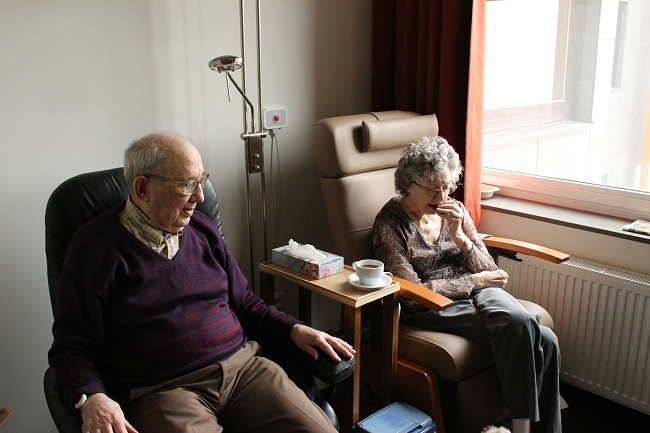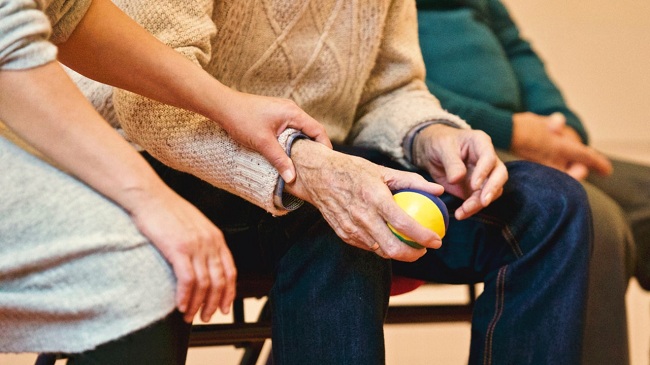Many people associate long-term care with elderly patients, but the reality is that anyone, at any age may experience the need for this type of care.
About 40% of people who require long-term care are actually under the age of 65. But at the same time, 12 million elderly or disabled Americans rely on long-term care to survive, as well.
It’s clear that, as a society, we have an obligation to ensure anyone who needs this type of care is not just receiving it, but also provided the services they need and deserve. That is, the quality of the care is just as important as its availability.
There are some improvements we can make — or are being made — to ensure long-term care quality, reliability and availability are all maintained.
1. Effective Staff Training and Development
It is imperative that long-term care providers and staff understand how to deal with a wide variety of situations and scenarios. Quality care isn’t just about the downtime or completing simple tasks like providing food, medicine and basic care. It’s also about how things are handled during an emergency or unforeseen event. In a power outage, how are all residents properly treated and secured? In a major emergency, are there enough resources and equipment to support everyone?
Well-trained and highly-competent teams are necessary for facilitating the kind of quality care that long-term patients need. And again, it’s about more than the day-to-day operations — it’s necessary all the time even during unexpected scenarios.
Modern technologies can help make this happen by providing more immersive training exercises. Imagine VR experiences that teach nurses and staff how to react to an event? Big data and analytics tools can be used to notify staff faster and in real-time.

2. More Efficient Documentation Processes
In medical and healthcare, documentation is everything. Patient records often follow a patient from birth until their final moments. This level of documentation should be followed in long-term care, as well. With the help of digital technologies and big data solutions, this can be made more precise and more effective too.
Rather than carrying around a huge stack of papers, care staff can utilize mobile devices, tablets and portable workstations. Through data entry, all the necessary information can be recorded, in real-time. Additional devices can be used to collect other details.
IoT and wearable tech, for example, can be used to monitor a patient’s heart rate or health and condition levels. This information can then be collected and presented to staff in a way that improves the entire operation.
3. Automated Resource Management
With the help of modern technology, it’s possible to automate a variety of management processes, providing more oversight as a result but also improving general operations. Property managers, staffing managers and any key upper management have their own work to do. They simply cannot be expected to monitor a facility and their teams constantly.
Advanced staffing tools can be used to keep track of personnel and equipment, helping to ensure they are utilized appropriately. More importantly, these systems can be used to issue and deliver commands, in real-time. The tools can even be run sans human input, with machine learning systems providing the necessary commands and directives. Moreover, these systems are capable of handling advanced tasks like staffing and recruitment, allowing for facilities to discover highly-qualified candidates.
Altogether, these technologies can help lower costs and financial burdens. On average, a nursing home stay can cost nearly $84,000 a year, while assisted living costs about $42,000 annually. Those are monumental burdens to carry for anyone, let alone someone who requires consistent care and likely cannot work.
Using resources more effectively, cutting down on operating costs, and providing patients with better care per cost are all necessary to reduce the financial burdens of everyone involved, including the patients themselves.
4. Creating a Positive Environment Through Real-Time Maintenance
If the facility or building itself is in disarray, then the quality of the stay and care will suffer as a result. It’s important that long-term care facilities also keep up with maintenance and development requirements. The same big data and analytical systems used for staffing or resource management can also be used to track the conditions of a facility.
An IoT equipped climate-control system, for example, could detect problems with operation and send alerts in real-time to the necessary maintenance staff. This would allow them to enact preventative maintenance to keep the system operational and prevent serious downtime.
Without heating or cooling in a facility, the residents and staff within would likely have a miserable time. But the same applies to nearly every resource and situation within a facility, including utilities such as water or power, and spaces such as patient rooms or care centers.
5. Updated Policies and Procedures
As more of these technologies are adopted within long-term care programs, it will be necessary to update and improve upon conventional policies. All procedures, processes, policies and guidelines should be reviewed regularly and amended as necessary to keep up with the current state of the field.
Ensuring the privacy and security of digital records, for example, is just one concern with these new solutions. Authentication is another aspect, which calls for only the appropriate caregivers and professionals to have access to sensitive data — no one else should view personal information. Not only will this help compliance with regulations like HIPAA, but it will also ensure the quality of care provided meets any set standards.
All personnel should have access to the proper documentation and policy information, as well as the appropriate training to prepare before they enter the field.

It’s Time to Make Long-Term Care a Priority
Long-term care is necessary for survival for a lot of people — not just the elderly. The number of people dependent on it, however, will continue to grow just as aging and disabled communities continue to do so. It’s not enough to simply provide care. How can we ensure the people who need it, receive comfortable, quality and safe care?
Many of the solutions discussed here will help get things on the right track. But the only real way to ensure these patients receive the care they deserve is to make the entire field a priority. It’s time we started giving it the attention and weight it deserves.
Luckily, some of the newer, innovative technologies deployed help to achieve this. We just have to understand, as a society, it shouldn’t stop there.
















